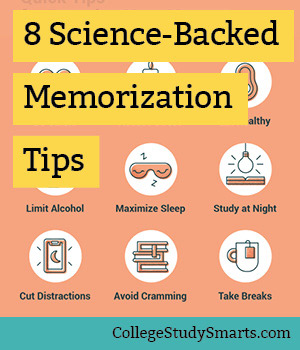Rise by Six: Your Daily Dose of Inspiration
Explore insights and stories that elevate your day.
Cramming Is Out: Fun Ways to Make Studying Stick
Discover creative strategies to enhance your studying and make knowledge stick—say goodbye to cramming for good!
Unlocking the Secrets: How to Make Study Sessions Enjoyable and Effective
Making study sessions enjoyable and effective is crucial for maximizing learning potential. Start by creating a positive environment that promotes focus and reduces distractions. Consider incorporating elements like background music, comfortable seating, and natural light to enhance the atmosphere. It's also beneficial to set clear goals for each session. Break down your study material into manageable chunks and use tools like flashcards or mind maps to visualize information. This can not only make studying more engaging but also improve information retention.
Another essential aspect of enjoyable study sessions is the incorporation of active learning techniques. Instead of passively reading through notes, try methods such as group discussions or teaching concepts to others. These techniques encourage deeper understanding and can turn studying into a collaborative and social experience. Additionally, don’t forget to include short breaks to recharge your brain and maintain motivation. A simple technique is the Pomodoro method, which combines focused study with short intervals of rest to keep energy levels high and concentration sharp.

The Science of Memory: Fun Techniques to Help Information Stick
The science of memory reveals that our brains are not just passive storage units, but instead dynamic systems that constantly reorganize and process information. To enhance memory retention, you can employ various fun techniques that tap into the natural workings of your brain. For instance, utilize the method of loci, which involves visualizing a familiar place and associating items you want to remember with specific locations within that space. This technique leverages spatial memory and can be particularly effective in recalling lists, speeches, or even complex concepts.
Another engaging strategy is to use mnemonic devices. These memory aids can take many forms, including acronyms, rhymes, or even chunking information into smaller, more digestible parts. For example, to remember the colors of the rainbow, you might use the acronym ROYGBIV (Red, Orange, Yellow, Green, Blue, Indigo, Violet). Moreover, putting information to a tune or rhythm can make it much easier to recall, as it aligns with how our brains naturally process sounds and patterns. By integrating these enjoyable techniques into your learning routine, you can boost information retention and make the process of studying feel more like a game than a chore.
Why Cramming Fails: Discover Engaging Alternatives for Lasting Learning
Cramming, while often seen as a quick fix for last-minute studying, ultimately fails to promote lasting learning. Research has shown that the brain struggles to retain information when it's overloaded in a short period, leading to a shallow understanding of the material. Instead of the content being encoded into long-term memory, it is merely a stressful race against the clock. To achieve true mastery of a subject, students should embrace effective learning strategies that prioritize understanding over mere memorization.
Engaging alternatives to cramming include methods such as spaced repetition, where information is reviewed at gradually increasing intervals, or incorporating active learning techniques like teaching the material to someone else. Additionally, utilizing tools such as mind maps or flashcards can help in making connections between concepts, thereby reinforcing knowledge. By shifting focus from cramming to these more interactive and thoughtful approaches, learners can cultivate a deeper and more enduring comprehension of the subject matter.